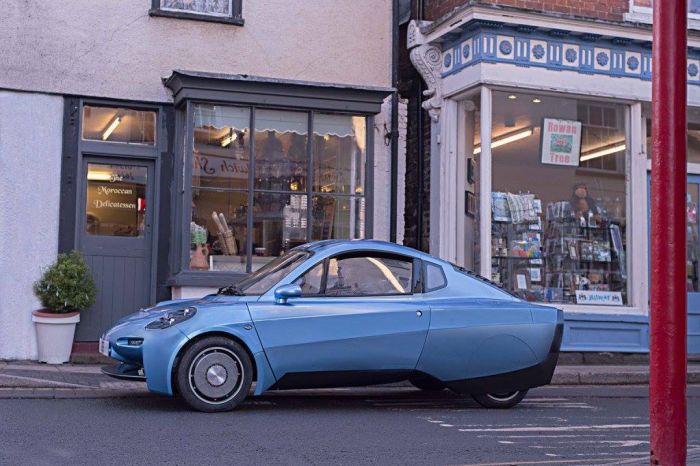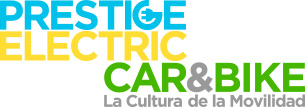Riversimple began with a hydrogen fuel cell, a manifesto for sustainable design and a blank sheet of paper. Every aspect of the Rasa has been created and interrogated for simplicity, efficiency, lightness, strength, affordability, safety and sustainability. And the name Rasa is a nod to that blank sheet of paper – Tabula Rasa means ‘Clean slate’ in Latin.
This first car is a two seater ‘network electric’ car, powered by a hydrogen fuel cell. The engineering prototype has clocked over 60mph and has been weaving neatly through the traffic in London, as well as gliding down the country lanes of Powys.
The chassis is a carbon fibre monocoque made from very lightweight but extremely stiff carbon fibre composites. The monocoque chassis weighs less than 40kg. The engineering prototype weighs only 580 kg.
The Rasa has Four electric motors, one in each wheel, that works also as brakes, recovering over 50% of kinetic energy when braking. There are sSuper-capacitors to store this energy and provide most of the power for acceleration.
It’s the synthesis of all these technologies that delivers the groundbreaking efficiency and range, many times better than inserting fuel cells into conventional, heavy, vehicles. The production prototype should do c.250 mpg (equivalent), with a range of 300 miles. Emissions are zero at tailpipe and c.40gCO2/km Well-to-Wheel – even if the hydrogen comes from natural gas.
The hydrogen passes through a Proton Exchange Membrane in the fuel cell where it combines with oxygen to form water and electricity. The electricity then flows to the motors in each wheel. These motors are small, lightweight and give the car 4 wheel drive.
When the car brakes, the kinetic energy, that is normally lost in the form of heat, is captured as electricity. As the car slows, this electricity floods into a bank of super-capacitors at the front of the car. Unlike a battery, these super-capacitors can take a huge charge very quickly, but they don’t store a lot of energy. The energy they take in is sent back to the motors again and provides the energy to accelerate.
The reason we are calling it a Network Electric car is that the energy is networked around the car. It can flow in any direction on any path apart from back into the fuel cell.
Our innovative network design means that we only require a fuel cell big enough to provide cruising speed power, rather than acceleration. We are getting more than 50% of the braking energy back, which is used to boost acceleration. It is the culmination of 15 years of development and it’s driving beautifully.
The production prototype is designed by Chris Reitz, former design chief for the Fiat 500, and his team at their studio in Barcelona. With further funding, 20 cars will be ready for Beta test with customers later this year. If you are interested in investing, being part of that test, or would like a car when they come to market in 2018.
press release:
Riversimple Movement Ltd is pleased to announce the unveiling of the “Rasa”, a road-legal engineering prototype of its first two-seater hydrogen powered road car, built for full European type approval. Supported by a £2m grant from the Welsh government in 2015, every aspect of the Rasa has been tailor-made and interrogated for lightness, strength, affordability and safety, to produce a vehicle that will maximise hydrogen as a fuel source and minimise pollution.
Riversimple will offer the car to motorists through its unique “sale of service” model. For a fixed monthly fee and mileage allowance, similar in expenditure to leasing and running a new family-sized hatchback, the company will cover all repair, maintenance, insurance and fuel expenses. Customers will never actually buy the car and experience the burden of depreciation; they will simply exchange or return it at the end of the ownership period.
Led by Riversimple’s Founder, Hugo Spowers, the Rasa has been engineered by a highly-skilled team from some of the world’s most renowned carmakers, Formula 1 teams and aerospace engineering companies. Its elegant and clean lines have been styled by Chris Reitz, one of Europe’s leading car designers. With a total kerb weight of just 580kg (nearly half of a small car), it features a carbon composite chassis and only 18 moving parts in the entire powertrain. Furthermore, Riversimple will adopt an open-source approach to its technology and componentry to encourage the proliferation of its technology and economies of scale within the sector.
When the vehicle is in motion, hydrogen passes through the small 8.5kW fuel cell (the size currently used in forklift trucks, equivalent to 11hp), where it combines with oxygen to form water and electricity to drive the motors positioned in each of the four wheels. More than 50% of the kinetic energy produced under braking is recovered and turned into electricity to boost acceleration via a bank of super-capacitors. The result is a range of up to 300 miles on 1.5kg of hydrogen, estimated fuel economy equivalent to 250mpg, and a top speed of 60mph. At around 40g CO2/km, the Riversimple car has the lowest carbon emissions for any vehicle 'well-to-wheel', and water is the only output.
Starting later this year, following funding to match a €2m EU grant, Riversimple will be conducting a public 12-month Beta trial of 20 Rasa prototype cars as part of the continued development of the first full production model which will come to market in 2018. It will be offered to individuals in a strategically planned phased roll-out by region in order to support a low risk, commercially practical introduction of profitable hydrogen refuelling infrastructure.
Hugo Spowers, Founder of Riversimple Movement Ltd, said: “The Rasa engineering prototype marks another key milestone in bringing an affordable and highly-efficient hydrogen-powered car to market. We really have started from a clean sheet of paper. The Rasa gives us the opportunity to introduce customers to a more convenient concept of motoring, a lightness of ownership that neither places a burden on the pockets of motorists or the surrounding environment. The car is simple, light and fun in every respect.”
Photos by Anthony Dawton

17 February 2016
Riversimple, a network hydrogen fuel cell car
by
V. Christian Manz
You can support me and my articles by donating the amount you want.
I will be very grateful.
I will be very grateful.

